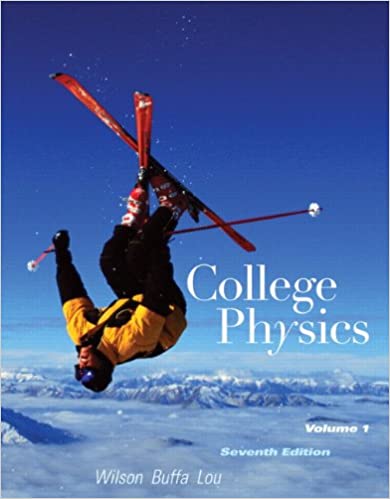
College Physics with MasteringPhysics 7th Edition by Jerry Wilson,Anthony Buffa,Bo Lou
Edition 7ISBN: 978-0321601834
College Physics with MasteringPhysics 7th Edition by Jerry Wilson,Anthony Buffa,Bo Lou
Edition 7ISBN: 978-0321601834 Exercise 56
An ideal spring of force constant k is hung vertically from the ceiling, and a held object of mass m is attached to the loose end. You carefully and slowly ease that mass down to its equilibrium position by keeping your hand under it until it reaches that position. (a) Show that the spring's change in length is given by
 (b) Show that the work done by the spring is
(b) Show that the work done by the spring is
 (c) Show that the work done by gravity is
(c) Show that the work done by gravity is
 Explain why these two works do not add to zero. Since the overall change in kinetic energy is zero, you might think they should, no (d) Show that the work done by your hand is
Explain why these two works do not add to zero. Since the overall change in kinetic energy is zero, you might think they should, no (d) Show that the work done by your hand is
 and that the hand exerted an average force of half the object's weight.
and that the hand exerted an average force of half the object's weight.
 (b) Show that the work done by the spring is
(b) Show that the work done by the spring is  (c) Show that the work done by gravity is
(c) Show that the work done by gravity is  Explain why these two works do not add to zero. Since the overall change in kinetic energy is zero, you might think they should, no (d) Show that the work done by your hand is
Explain why these two works do not add to zero. Since the overall change in kinetic energy is zero, you might think they should, no (d) Show that the work done by your hand is  and that the hand exerted an average force of half the object's weight.
and that the hand exerted an average force of half the object's weight.Explanation
The force constant of the spring is k
Th...
College Physics with MasteringPhysics 7th Edition by Jerry Wilson,Anthony Buffa,Bo Lou
Why don’t you like this exercise?
Other Minimum 8 character and maximum 255 character
Character 255


